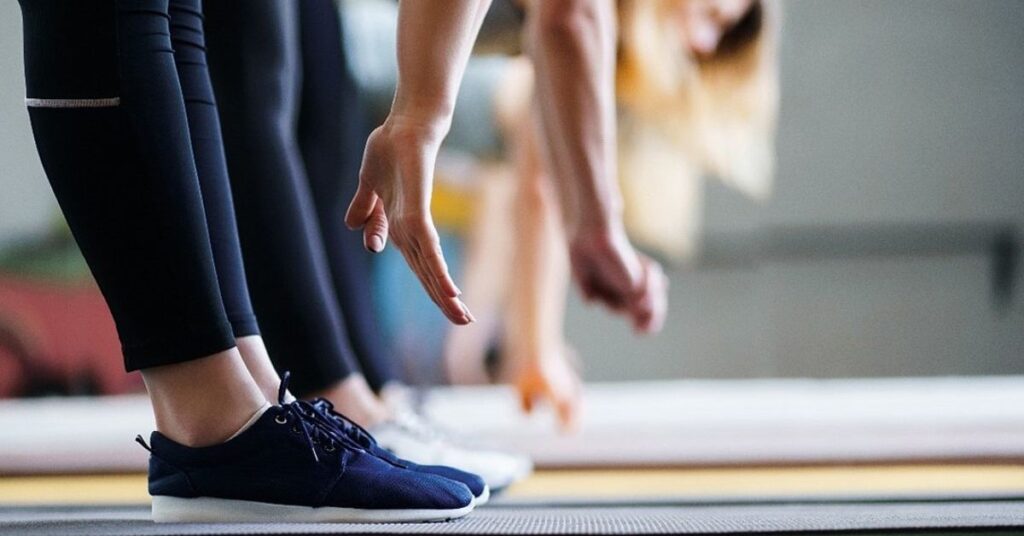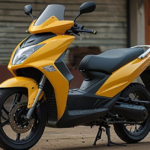Running is often viewed as a straightforward physical activity—put on your shoes, hit the pavement, and go. However, for seasoned runners like Rosalie Toren, running is much more than that; it’s a holistic pursuit that demands a balance of strength, flexibility, and mental focus. As a dedicated runner and yoga enthusiast, Rosalie understands that incorporating yoga into her training regimen not only enhances her performance but also prevents injuries. In this article, we delve into Rosalie’s journey, her philosophy on running, and the specific yoga routines she advocates for runners, detailing key poses and their benefits.
Who is Rosalie Toren?
Rosalie Toren is not just a runner; she’s a passionate advocate for the benefits of yoga in enhancing athletic performance. Growing up in a small town, Rosalie found her love for running at an early age. As she progressed through her teenage years, she discovered that running provided not only physical benefits but also mental clarity and emotional stability. This duality in running sparked her curiosity about complementary practices that could enhance her performance.
Rosalie holds a degree in Exercise Science and is a certified yoga instructor. Her academic background, coupled with her personal experiences, equips her with a deep understanding of how various practices can intersect. This knowledge has driven her to share her insights with other runners, encouraging them to embrace yoga as an essential part of their training.
Check Also: Black Carrot Benefits
The Intersection of Running and Yoga
The Benefits of Yoga for Runners
Running is a high-impact activity that often places a significant strain on the body. Many runners experience tight muscles, imbalances, and, unfortunately, injuries. This is where yoga comes in. Here are some of the primary benefits of incorporating yoga into a runner’s training routine:
- Enhanced Flexibility: One of the most significant advantages of yoga is its ability to improve flexibility. Tight muscles can lead to injuries, particularly in the hamstrings, calves, and hips. Yoga poses stretch these muscle groups, allowing for a greater range of motion and reducing the risk of strains.
- Strength Building: While running primarily focuses on the lower body, yoga strengthens various muscle groups, including the core and upper body. A strong core helps stabilize the pelvis, improving running form and efficiency.
- Improved Balance and Coordination: Many yoga poses require balance and coordination, which are crucial for runners. Enhanced balance can lead to better control over movement, ultimately improving performance.
- Mental Focus: Running is as much a mental challenge as it is a physical one. Yoga promotes mindfulness and concentration, helping runners stay focused during long runs and races.
- Recovery and Relaxation: Yoga encourages relaxation and aids in recovery. The deep breathing techniques practiced in yoga can help reduce stress and tension, promoting faster recovery after intense training sessions.
Rosalie toren Yoga Philosophy
Rosalie believes in a holistic approach to running. For her, it’s not just about putting in the miles; it’s about creating a balanced training regimen that includes strength training, flexibility work, and mental preparation. She emphasizes that yoga should complement a runner’s training, not replace it.
Rosalie’s philosophy is centered around the idea that runners should listen to their bodies. Yoga offers the tools to develop a deeper connection to one’s body, helping runners recognize when to push harder and when to rest. This awareness is crucial for preventing injuries and promoting longevity in the sport.
Key Yoga Routines for Runners
Rosalie recommends incorporating specific yoga routines into a runner’s training schedule. Here, we’ll explore some of her favorite routines, including key poses and their advantages.
1. Morning Stretch Routine
Starting the day with a gentle yoga routine can prepare the body for a day of running. Rosalie’s morning stretch routine includes the following poses:
Cat-Cow Stretch (Marjaryasana-Bitilasana)
Benefits: This dynamic pose warms up the spine, promoting flexibility and reducing stiffness.
How to Do It:
- Start on all fours, with your wrists aligned under your shoulders and knees under your hips.
- Inhale, arch your back (cow pose), and lift your head and tailbone.
- Exhale, round your back (cat pose), tucking your chin and tailbone.
- Repeat for 5-10 breaths.
Downward-Facing Dog (Adho Mukha Svanasana)
Benefits: This pose stretches the hamstrings, calves, and shoulders while strengthening the arms and legs.
How to Do It:
- From all fours, tuck your toes and lift your hips up and back.
- Press your heels toward the ground and relax your neck.
- Hold for 5-10 breaths.
Low Lunge (Anjaneyasana)
Benefits: This pose opens up the hips and stretches the hip flexors, which can get tight from running.
How to Do It:
- Step your right foot forward into a lunge, with your left knee on the ground.
- Raise your arms overhead, stretching your torso upward.
- Hold for 5-10 breaths, then switch sides.
2. Pre-Run Routine
A dynamic pre-run routine helps activate the muscles and prepare the body for running. Rosalie’s recommended pre-run routine includes:
Sun Salutations (Surya Namaskar)
Benefits: Sun Salutations are a series of flowing movements that warm up the body, increase heart rate, and improve flexibility.
How to Do It:
- Start in Mountain Pose (Tadasana).
- Inhale, raise your arms overhead (Urdhva Hastasana).
- Exhale, fold forward into a Forward Bend (Uttanasana).
- Inhale, step back to Plank Pose (Kumbhakasana).
- Exhale, lower into Chaturanga Dandasana.
- Inhale, upward-facing dog (Urdhva Mukha Svanasana).
- Exhale, downward-facing dog.
- Repeat for 3-5 rounds.
Warrior II (Virabhadrasana II)
Benefits: This pose strengthens the legs and opens the hips while improving balance and focus.
How to Do It:
- Step your feet wide, turning your right foot out and bending your right knee.
- Extend your arms parallel to the ground, gazing over your right hand.
- Hold for 5-10 breaths, then switch sides.
3. Post-Run Recovery Routine
After a run, it’s essential to focus on recovery and stretching. Rosalie recommends the following poses:
Pigeon Pose (Eka Pada Rajakapotasana)
Benefits: This pose deeply stretches the hips and glutes, which can become tight after running.
How to Do It:
- From a tabletop position, bring your right knee forward and place it behind your right wrist.
- Extend your left leg back, keeping your hips squared.
- Hold for 5-10 breaths, then switch sides.
Seated Forward Bend (Paschimottanasana)
Benefits: This pose stretches the hamstrings and lower back, promoting relaxation.
How to Do It:
- Sit with your legs extended in front of you.
- Inhale, reaching your arms overhead, then exhale as you fold forward, reaching for your feet.
- Hold for 5-10 breaths.
Legs Up the Wall (Viparita Karani)
Benefits: This restorative pose helps reduce fatigue and promotes relaxation after a run.
How to Do It:
- Sit next to a wall, then lie back and extend your legs up the wall.
- Relax your arms by your sides and breathe deeply for 5-10 minutes.
Creating a Balanced Training Schedule
Rosalie emphasizes the importance of incorporating yoga into a well-rounded training schedule. Here’s how runners can create a balanced weekly regimen:
Sample Weekly Training Schedule
- Monday: Easy run (30-45 minutes) + Morning stretch routine
- Tuesday: Strength training + Pre-run yoga routine
- Wednesday: Long run (60-90 minutes) + Post-run recovery routine
- Thursday: Rest day or light yoga session
- Friday: Tempo run (30-45 minutes) + Pre-run yoga routine
- Saturday: Cross-training (cycling, swimming) + Morning stretch routine
- Sunday: Rest day or restorative yoga session
Tips for Integrating Yoga into Running
For runners new to yoga, Rosalie offers the following tips for seamless integration:
- Start Slow: If you’re new to yoga, begin with one or two sessions a week. Gradually increase frequency as you become more comfortable with the poses.
- Focus on Breath: Breath is a vital component of both yoga and running. Practice deep breathing during yoga to enhance relaxation and improve oxygen flow during runs.
- Listen to Your Body: Pay attention to how your body feels during yoga and running. Adjust poses as needed and don’t hesitate to rest when necessary.
- Utilize Online Resources: Many online platforms offer yoga classes specifically designed for runners. These can be great for beginners and allow you to practice at your own pace.
- Join a Class: If possible, consider joining a local yoga class for runners. This can provide guidance from an experienced instructor and foster a sense of community.
The Mental Aspect of Running and Yoga
While physical training is essential, the mental aspect of both running and yoga cannot be overlooked. Rosalie believes that developing mental resilience is just as important as building physical strength.
Mindfulness in Running
Rosalie encourages runners to practice mindfulness during their runs. This means being present in the moment and focusing on the rhythm of your breath and footsteps. Mindfulness can lead to a more enjoyable running experience and reduce anxiety during races.
Meditation Techniques
In addition to yoga, Rosalie incorporates meditation techniques into her routine. She suggests starting with just a few minutes of meditation each day, gradually increasing the duration. Meditation can improve focus, reduce stress, and enhance overall well-being.
Visualization
Visualization is another powerful tool that Rosalie recommends for runners. Before a race, she encourages athletes to visualize their goals and imagine themselves achieving them. This practice can boost confidence and help alleviate pre-race jitters.
Overcoming Common Running Injuries
Injuries are a common concern for runners, but Rosalie believes that many can be prevented with proper training and recovery techniques. Here are some strategies she advocates for injury prevention:
Listen to Your Body
As previously mentioned, listening to your body is crucial. If you feel pain or discomfort, it’s essential to address it rather than pushing through. Rest and recovery are vital components of any training regimen.
Cross-Training
Incorporating cross-training activities, such as cycling, swimming, or strength training, can help prevent overuse injuries by allowing different muscle groups to strengthen and recover.
Proper Footwear
Wearing the right shoes for your foot type and running style is essential. Rosalie advises runners to get fitted at a specialty running store to ensure they have the proper footwear for their needs.
Conclusion
Rosalie Toren embodies the spirit of a dedicated runner and the philosophy of holistic training. By incorporating yoga into her daily routine, she has found a way to enhance her performance, prevent injuries, and cultivate a deeper connection to her body and mind.
Whether you’re a seasoned runner or just starting, Rosalie’s insights on the benefits of yoga can help you take your training to the next level. By embracing the power of yoga, you can improve flexibility, build strength, and develop mental focus—all essential components for a successful running journey. As you lace up your shoes and hit the pavement, remember that running is not just about speed; it’s about finding balance, joy, and connection within yourself.







